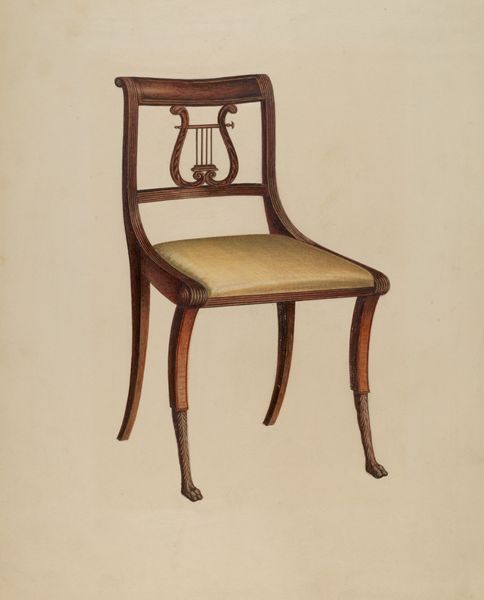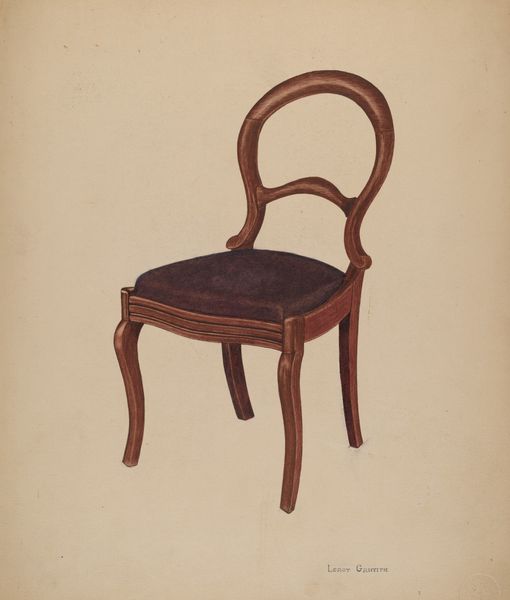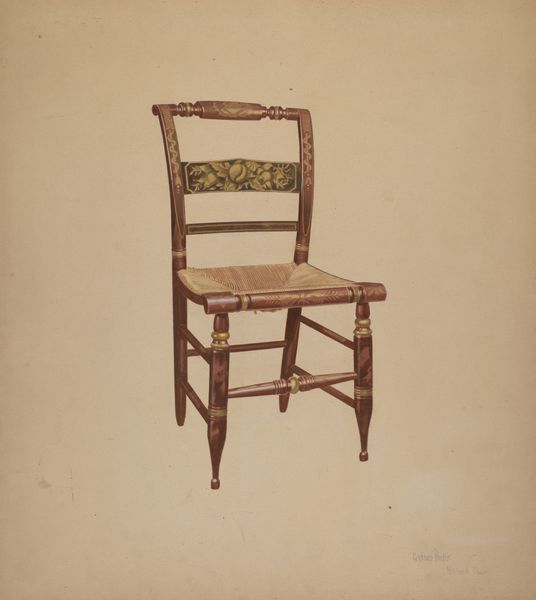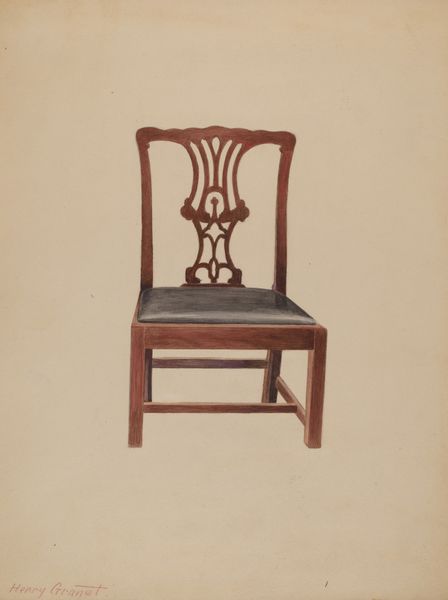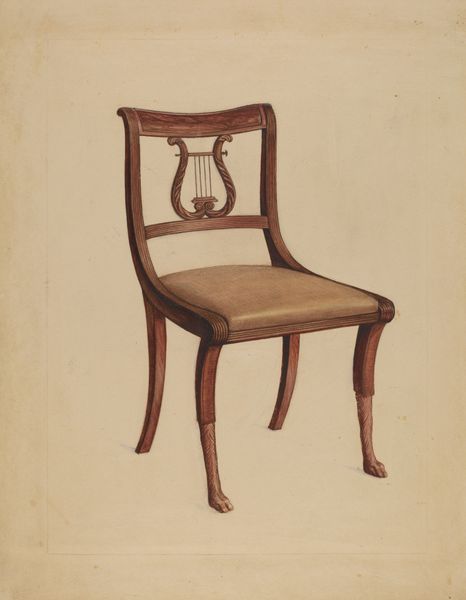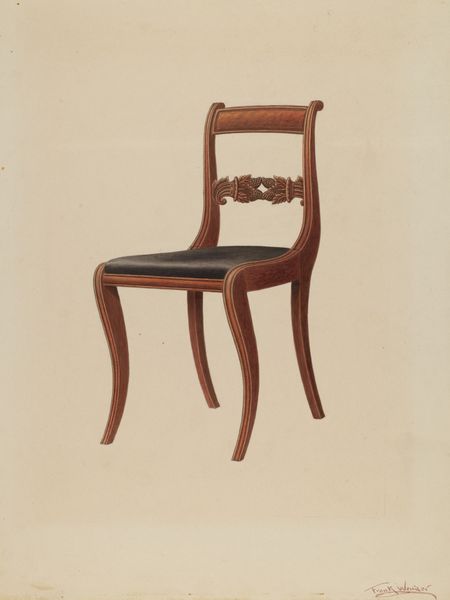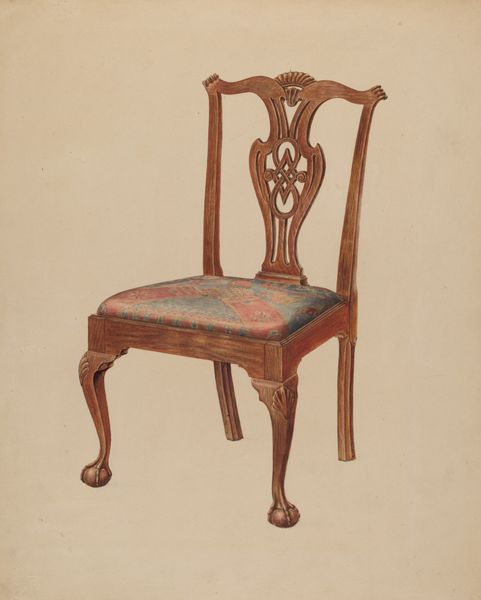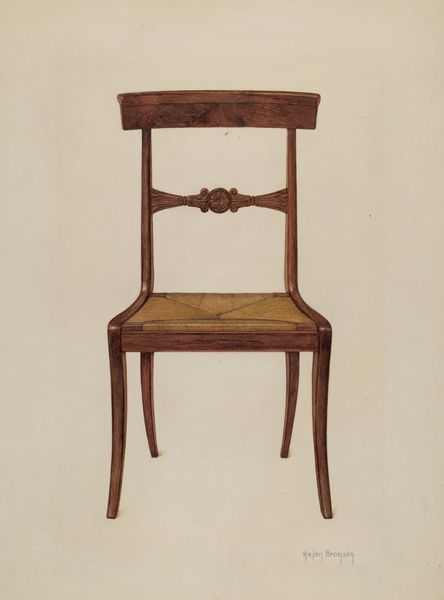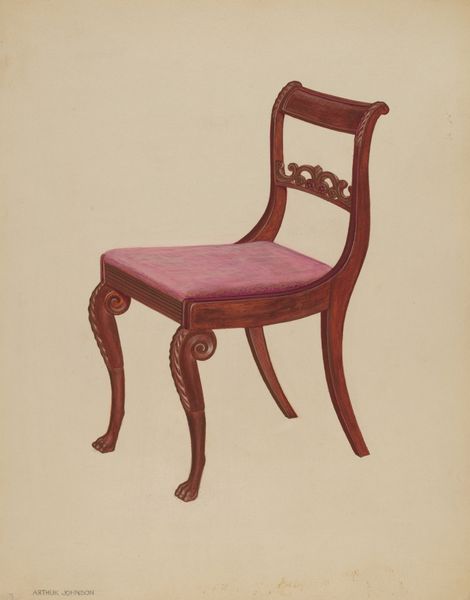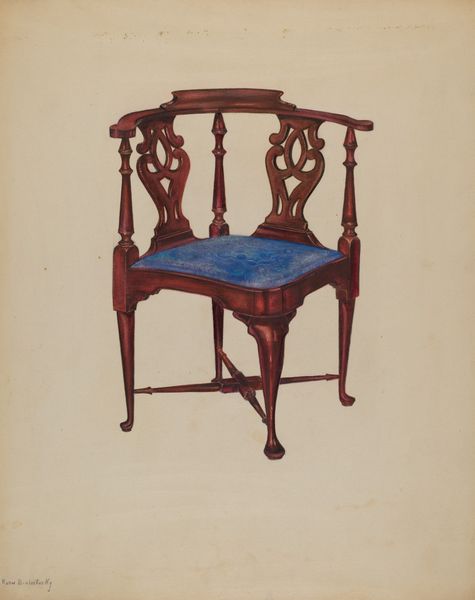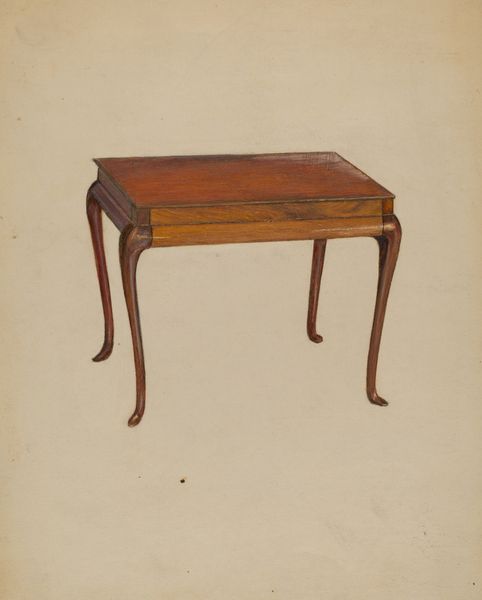
drawing, paper, pencil
#
drawing
#
paper
#
pencil drawing
#
pencil
#
watercolor
#
realism
Dimensions: overall: 36.8 x 45.7 cm (14 1/2 x 18 in.) Original IAD Object: 43"long; 14 1/2"wide; 28 1/2"high. Seat 15"high.
Copyright: National Gallery of Art: CC0 1.0
Curator: We’re looking at “Window Seat,” a 1939 piece by Harry Eisman. It’s a drawing done with pencil and watercolor on paper. My initial reaction is one of classical stillness. The formal balance is almost unnerving. Editor: The craftsmanship feels central here. You can see in the details that Eisman lavished a lot of labor, drawing, and painting those little classical motifs. Note the legs ending in delicate claw feet, quite unusual for a simple bench. Curator: Absolutely, that’s what draws my attention—those paw-like feet at the base, the decorative carvings reminiscent of ancient acanthus leaves rising up. And notice the design on the seat. Do these speak to a deliberate message about power or domesticity? Editor: Well, this piece walks a fine line, I think, between art and craft. The materiality seems integral, doesn't it? I mean, consider the availability of specific pigments or the quality of paper in 1939 – those elements deeply inform the aesthetic result and speak of material availability. The piece documents that economy in subtle ways. Curator: Agreed, the era undeniably informs it, but let's look closer. I see neoclassical symbols everywhere – references to the ancient world and power, even as they are re-contextualized to describe a bench meant to hold someone's weight in quiet rest, perhaps. How do we reconcile that tension? Editor: I would suggest that maybe the "window seat" itself, the ordinary object represented, underscores that accessibility. The tension is in how this quotidian object takes on signifiers of class and privilege. Eisman perhaps reveals more about the era's class-based manufacturing aspirations in rendering such a design with common materials. Curator: You're prompting me to rethink this quiet drawing. What seemed static now feels subtly charged. Thanks to you, I'm paying closer attention to that friction, how power finds itself visualized, accessible but not approachable. Editor: Indeed, the simple fact of the creation underscores the importance of documentation and the social position of the act of material re-creation. The way that Harry Eisman manipulated commonplace mediums provides so much insight into those values of that particular period.
Comments
No comments
Be the first to comment and join the conversation on the ultimate creative platform.
